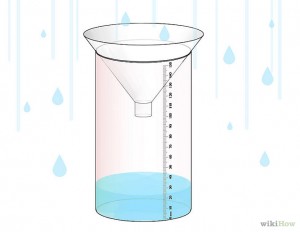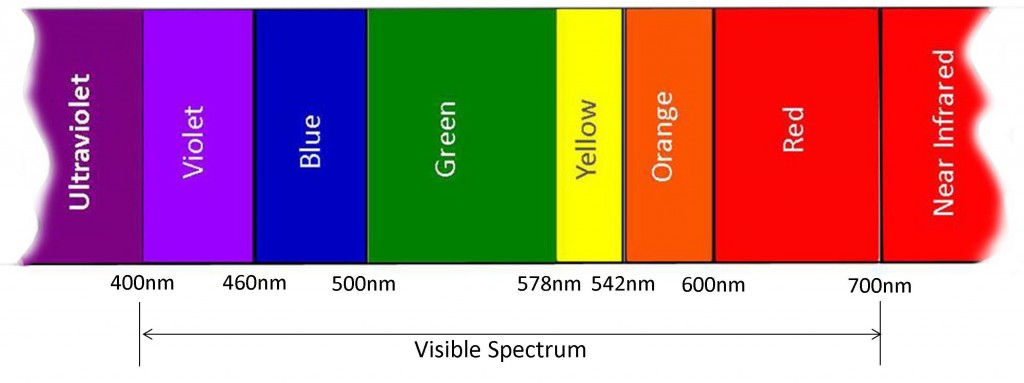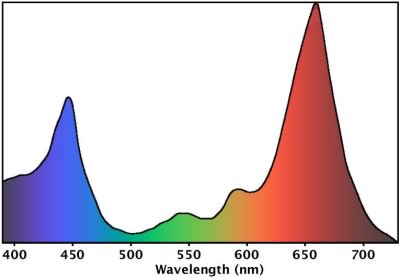In Light Basics part 1, we covered the very basics of lighting for the planted aquarium. We talked about why light is important to plants, how we can meet a plant’s needs in a short or longer time and we introduced the concept of photosynthetically active radiation (PAR). If you haven’t read it yet, please go do so now as this Light Basics part 2 builds on that foundation.
Now that we know how important light is to plants and the fact that it is one-third of the golden equation, we need to:
- learn a little more about light itself and how it powers photosynthesis; and
- how we can compare light fixtures based on your particular lighting needs. Remember that researching light fixtures was your homework from part 1. You did do your homework, right???
OK let’s get on with it. Tell me what light is good for photosynthesis?
Right! Last time we learned that plants need light to power photosynthesis. But, will any light do?
Well, no. Let me explain.
You’ve seen a rainbow, right? Well, then you’ve seen the work of a prism. When you shine white light through a prism, magic happens! That beam of white light is separated into its component wavelengths that make the rainbow. That spectrum of light goes from ultraviolet to infrared.
The visible part of this spectrum just so happens to also be the spectrum that plants need to photosynthesize. The range is from 400 nanometers to 700 nanometers. Actually, recent studies have demonstrated that plants use a broader spectrum that assists them with numerous things but we don’t really need to know that.
So, as long as the light we are giving our plants contains the spectrum between 400 nm to 700 nm, then we can feel good about ourselves that photosynthesis will happen. Yay!
This light spectrum is called photosynthetically active radiation (remember, scientists call light radiation) or PAR. Therefore, PAR is not a measurement like weight or distance. Instead, PAR is a range of light.
You will see PAR used often on the Internet as if it was a measurement. It’s not. That is why I told you not to use PAR exclusively to compare light fixtures. You need more info that we will be focusing on now.
For now, however. Just remember that as long as your light fixture is providing PAR, then it works for your plants.
Wait a minute! If PAR is not a measurement, a 15 watt incandescent bulb and a 150 watt metal halide bulb both give PAR so there is no difference between the two of them when it comes to photosynthesis? That doesn’t seem right!
Yup, you’re on the ball! There certainly is a difference but it isn’t related to PAR. Both bulbs put out light that is considered PAR so both would work to use in your planted aquarium. To decide between the two and see why they are different, we need to learn another concept and characteristic of light.
Light, my friends, is both a wave and a particle. The image below is the first time both of these characteristics of light have been captured in a photo. 
Without getting too deep in the weeds of light science, all we need to care about is that light is really waves of energy packets. These packets are called photons. Yes, I said photons, Scotty.
These photons can be measured and each light source puts out a different amount. This amount is called photosynthetic photon flux or PPF. That metal halide bulb we mentioned, puts out a higher PPF than that incandescent bulb.
Therefore, if we stopped here, we would say that both the incandescent and metal halide both put out PAR but the metal halide puts out a higher PPF. Therefore, the metal halide is better, right? Wrong. I’ll explain.
But first, please note that some manufacturers combine PAR and PPF. It makes sense if you think about it. It’s a round about way to measure the amount of PAR being put out by the light fixture.
OK explain. Why isn’t the higher PPF better?
OK OK. Here goes. Pay attention.
You know that the farther away you get from a light source, the less bright/intense the light is. Right? Also, if the light has to travel through water, then the intensity is decreased.
If this is true, what we should care about is how much light is actually arriving on our plants’ leaves. Expressed another way, we want to know the PPF/PAR at the leaf surface, not directly under the light bulb. Make sense?
The amount of PPF hitting the leaf surface is called photosynthetic photon flux density or PPFD. This is what we should really care about because if the photons don’t hit the plant, photosynthesis won’t start.
Think of it this way. Picture a rain cloud. That is your light source. The rain drops are the photons. Got it?
 Now pretend your plant has a rain gauge on its leaf. We want to fill that rain gauge.
Now pretend your plant has a rain gauge on its leaf. We want to fill that rain gauge.
If our rain cloud is the size of Texas and it is only drizzling, very few of those rain drops (photons) will end up in the rain gauge. However, if we have a very small, powerful raincloud over our plant, that rain gauge will fill up plenty quick. Reminds me of the South Florida afternoon thunderstorms that can drop 5 inches of rain in an hour.
What did we learn? It isn’t all about PPF although that’s important. What is REALLY important is the light fixtures PPFD because that dictates the light that will strike your plant and kick photosynthesis into action!
Ah! I think I’m getting it! What I should be looking for is what PPFD does a light fixture put out?
Yesssss! But what else? You almost got it!
You want to know the fixture’s PPFD at a specific distance from the fixture itself. So good manufacturers will have charts that show a PAR number directly under it and then at various distances from the fixture. That way, if you know that your plant will be 12 inches away from the light fixture, you can figure out what PAR you plant will be getting.
Remember, I’m using PAR above because that’s what most manufacturers will show. However, what they really mean is PPFD at that distance.
So what else would you like to know before you make a decision on the light fixture?
Hmm… I don’t know. Maybe how much PPFD my plants need?
Bingo!!
Exactly! All we know now is that fixture X puts out X amount of PAR at X distance from it. Without know what your plant needs, this information is meaningless.
This brings us to the day light integral (DLI) or what I call the rain gauge. Each plant has a certain amount of photons that it needs during the daily photoperiod to photosynthesize optimally. High light plants need a lot of photons and hence their rain gauge (DLI) is big. Conversely, low light plants need less photons and, hence, their rain gauge is small.
Unfortunately, there are no universally agreed PPFD ranges for aquatic plants. There is some support for the following VERY general starting points:
- low is 15-30 PPFD
- med is 30-50 PPFD
- high is 50+ PPFD
Use the above only as a starting point and watch your plants. Ideally, your light fixture would have an adjustment feature to throttle the output. An alternative is to raise or lower the fixture itself.
Wait a minute, what about all this stuff I’ve heard about PUR and PAS?
PUR is photosynthetically useful radiation and PAS, the same thing, means photosynthetically active radiation. The above chart is commonly called the McCree Curve and it represents the areas of the PAR spectrum that activate photosynthesis the most. As you can see, red causes the most activity followed by blue and them a little bit of the green.
Based on this research, people hypothesize that we should really focus on PUR when choosing our lights so we can deliver the optimal light spectrum for photosynthesis. This should, eliminate other areas of the spectrum and, theoretically, saving energy.
Unfortunately, all of the research behind this is from terrestrial plants and algae. Aquarium plants have adapted to being under water where light attenuates. They don’t follow the McCree Curve and, instead, are much more flexible in terms of what they use within PAR. It makes no sense for us hobbyists to worry about the PUR spectrum because:
- We don’t know what it is as the McCree Curve doesn’t apply; and
- Even if we did know the proper spectrum, how much of a difference would it make? My guess is not much.
Instead on choosing a spectrum to that is PUR, focus on a spectrum that’s pleasing to your eye. After all, that’s what it’s all about.
Ah, OK. So how should I decide what my plants need in terms of light?
Good! Let’s bring this all together.
- Start with what plants you want and where they will be relative to the light fixture.
- Note the light level needs of your plants.
- Armed with the PPFD that you’ll need at different distances from the light fixture, go find fixtures that have matching numbers at the various distances.
- Narrow it down to a few fixtures.
- Use other factors to choose the winner such as cost, aesthetics, energy use, adjustability, etc.
I truly hope that Light Basics Part 1 and this Part 2 of the Introduction to Aquarium Plants Tutorial has helped you understand lighting better and how to choose lighting for your aquarium.
Next in the series is Carbon Dioxide (CO2) Basics.
Housekeeping
- The ScapeFu App is now available for iOS and Android. Please go download it and help us defray the cost of running ScapeFu. Here’s what you get:
- Convenience of automatically getting each episode of ScapeFu as it comes out;
- Access to our entire library of past episodes;
- The Ask Art Podcast which is app-only; and
- I’m told your good karma will result in fewer red lights as you drive your car.
- The ScapeFu Tribe Community Forum is now live. It’s our very own growing community where we can discuss episodes of the ScapeFu podcast and anything else you’d like. Go check it out!






One Comment on “Light Basics Continued – Introduction to Aquarium Plants Tutorial Part 2”
Pingback: Light Basics - Introduction to Aquarium Plants Tutorial - ScapeFu